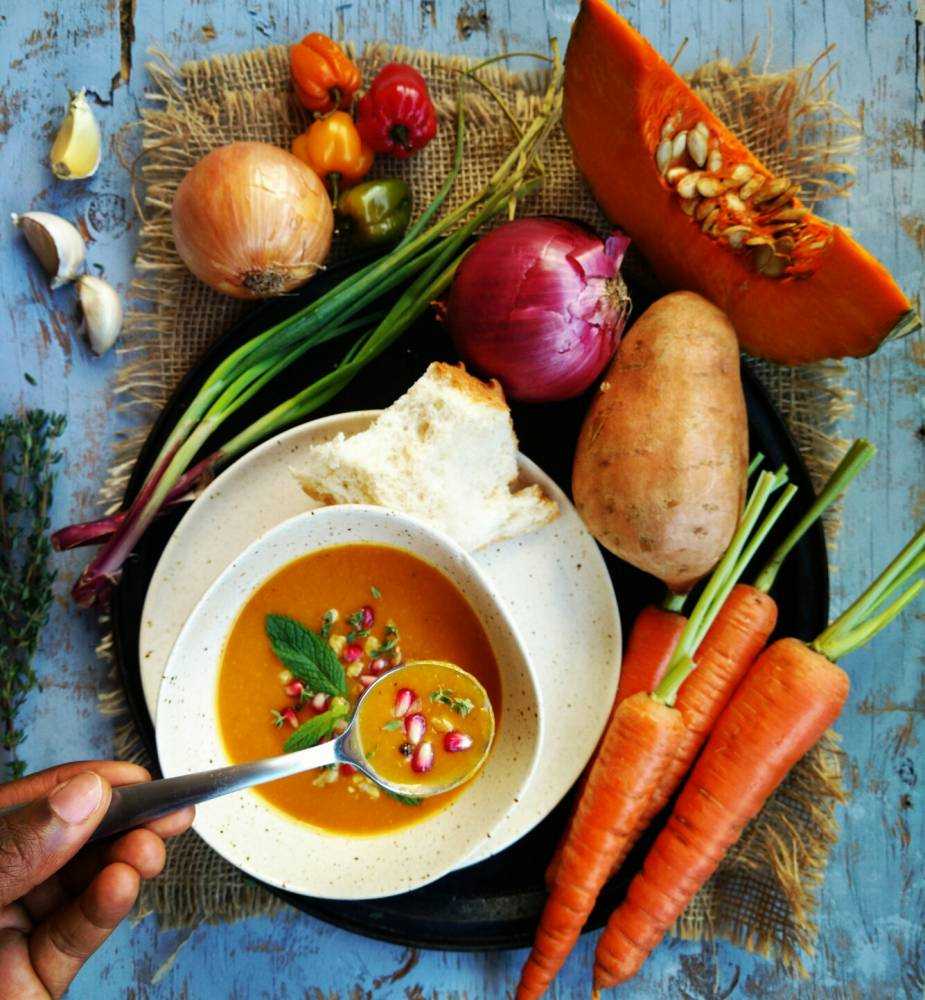BY: EARTHA LOWE
There’s a famous reggae song titled “Hot Sexy Punkie” by international artist Sean Paul. Should you know this “sweet” reggae song, raise your hand if each year at the beginning of harvest season, the lyrics start to loop in your head? Like many other people that I know, when this song was first released in 2002, we all thought Sean Paul was singing “Hot Sexy Pumpkin.” Harvest season means Thanksgiving, apple picking, an abundance of pumpkins (all types of pumpkins!), Jack-O-Lanterns, pumpkin patches, pumpkin pie and pumpkin spice recipes. You’ll love nothing more than cooking up recipes inspired by fall’s bounty but with that, and the sight of pumpkins everywhere comes the remix.
Soup-making: Soup-making may conjure up an image of huge pots containing hundreds of ingredients simmering all day long, but that need not be the case. A batch of soup can be made in the same amount of time it takes to make many other dinner dishes and is among the most satisfying of kitchen tasks. Making soup in many instances, is also not precise, which make the process easy and fun. There are, however, general rules and basic techniques to make soup better.
To make soup at its most basic, you start with water, add some means of making it taste better – usually meat, poultry, fish or aromatic vegetables, along with seasonings – and finish with more vegetables and/or grains. Is stock essential for every soup? No. Will it improve the taste of almost any soup? Yes. Even the simplest vegetable stock made with ingredients like onion, leek, carrot, celery and other scraps of vegetables, will make a difference in most soups. The one rule to follow when making vegetable stock is to roast the vegetables before simmering them. Browning the vegetables add body and flavour.
Preparing Foods for Soup: It doesn’t matter much how you cut vegetables if you plan to puree them to thicken the soup. However, uniform cutting will allow the foods to cook evenly. Cut vegetables about the same size so they’ll finish cooking at the same time.
You’ll need
- 3 tablespoons coconut oil
- 3 cups pumpkins, diced
- 2 large carrots, diced
- 1 cup sweet potato, diced
- 1 large onion, chopped
- 3 – 4 cups vegetable broth
- 1/4 cup coconut milk (optional)
- 3 garlic cloves, minced
- 2 tablespoons green onion, finely chopped
- 1 tablespoon ginger, finely grated
- sea salt and freshly ground black pepper
Directions
- Melt the coconut oil in a large saucepan over medium heat. Add the pumpkin, carrot, sweet potato, onion and garlic and saute, stirring occasionally for 10 minutes.
- Add the stock and ginger, reduce the heat, cover, and simmer, stirring occasionally for about 30 minutes, or until carrot is tender. Add in the coconut milk and green onion.
- Puree the soup using a blender.
- Ladle the soup into bowls.
Tips
Garnish with finely sliced green onion, fresh thyme leaves or chopped nuts (optional).
Substitute the pumpkin with any other type of squash.
Category: vegan, vegetarian
Prep and cook time: 60 minutes
Serves: 4
Difficulty: easy
With the use of a blender (including the handheld immersion blender), it is possible to puree almost any vegetable soup and many others as well. Soup’s on everyone!

